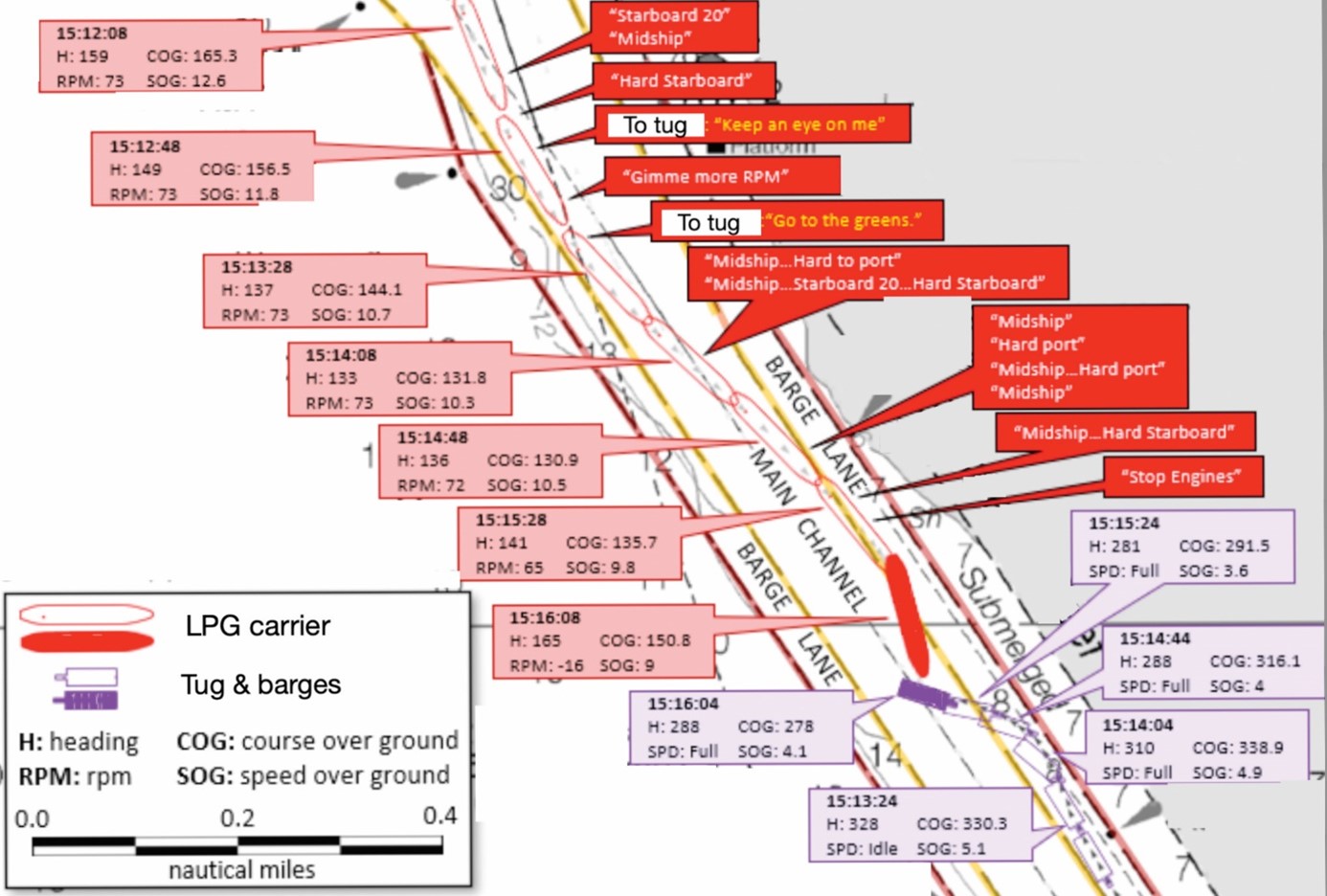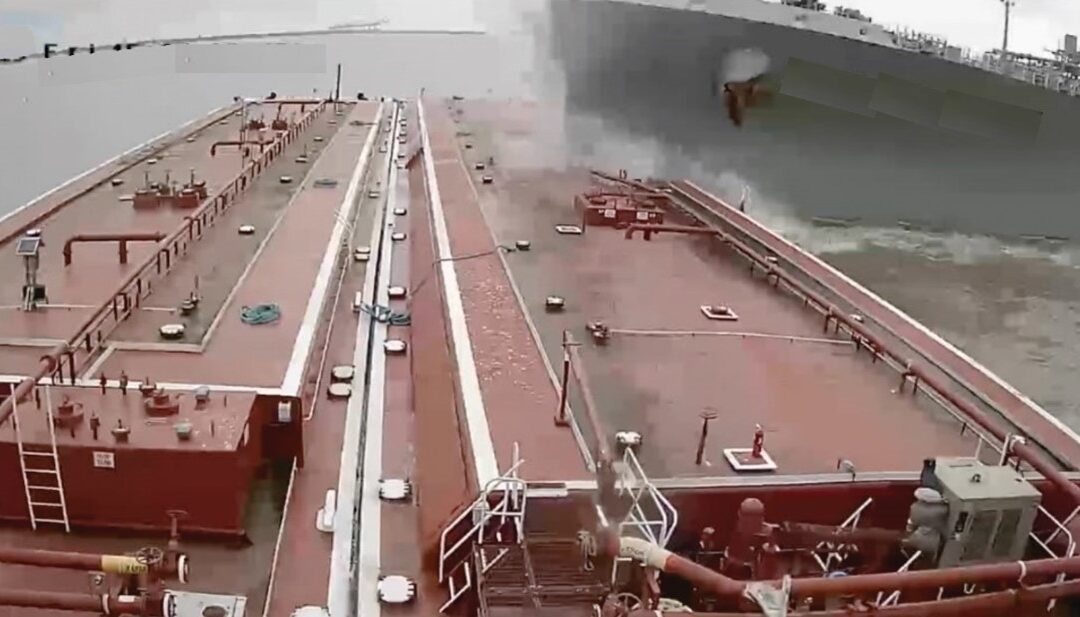Research on hydrodynamic interaction indicates that if the speed of the ship near a bank is too high, the rudder may be less able to cope with the forces induced and control will be lost. The Nautical Institute highlights this in its latest Mars Report, in which an LPG carrier hit a barge being towed by a tugboat as a result of hydrodynamic forces.
The Nautical Institute gathers reports of maritime accidents and near-misses. It then publishes these so-called Mars Reports (anonymously) to prevent other accidents from happening. A summary of this incident:
A loaded LPG carrier was under pilotage in a restricted waterway, outbound for the sea. It had met several inbound vessels without incident, and the pilot requested full sea speed. As the vessel’s speed increased and approached 12 knots, another vessel was approaching inbound. The pilots had agreed to a port-to-port encounter. As the two vessels met, several helm orders were needed to control the LPG vessel’s trajectory.
The LPG carrier was nonetheless shifted to starboard, close to the waterway bank. At this point, hydrodynamic forces came into play. The vessel was by now making 12.6 knots, swinging to port and crossing the channel directly towards an inbound tug pushing two barges side by side. Both barges were fully laden with a gasoline blending stock.
The tow was making about 5.3 knots speed over ground and was about 0.7nm from the LPG carrier. The pilot on the LPG carrier ordered hard starboard rudder, then called the tug on VHF radio. The LPG carrier’s bow was now pointing directly at the tug and its barges. The pilot realised the LPG vessel was not going to make it back to the starboard side of the channel, so he requested the tug Master to ‘Go to the greens’, meaning the tug and barges should cross the channel so the vessels would then pass starboard to starboard.
The tug master complied and gave full port rudder, but within minutes the LPG vessel’s bow struck one of the barges midship on the starboard side, penetrating the double hull and breaching two cargo tanks in that barge. The force of the collision capsized the second barge although no tanks were breached.

No crew on either vessel were injured, but nearly two million litres of gasoline blending stock were lost into the waterway. The two barges, with a combined insured value of $2,789,643, were later determined to be constructive total losses and scrapped.
Investigation findings
The official investigation found, among other things, that the combined effect of the speed of the LPG vessel passing another large vessel in the asymmetrically shaped channel resulted in an uncontrollable sheer to port by the LPG vessel, initiating the chain of events that led to the collision.
Also read: Hydrodynamic forces bring on collisions (Mars 201703/201704)
Advice from The Nautical Institute
- Proceeding at full sea speed in a restricted channel not only increases the risks of an uncontrolled shear due to hydrodynamic effects, but leaves the mariner with few options to mitigate or control the situation.
- Unwanted hydrodynamic effects on ships navigating narrow channels often catch ship operators by surprise. Mars has several instances of these types of incidents; usually, too much speed has contributed to the unwanted outcome. For a few examples, see Mars Reports 201703, 201704 and 201830. The official Transportation Safety Board of Canada report on which MARS 201704 is based is a good example of how this phenomenon can take mariners by surprise.
Mars Reports
This accident was covered in the Mars Reports, originally published as Mars 202138, that are part of Report Number 346. A selection of this Report will also be published in SWZ|Maritime’s September 2021 issue. The Nautical Institute compiles these reports to help prevent maritime accidents. That is why they are also published on SWZ|Maritime’s website.
More reports are needed to keep the scheme interesting and informative. All reports are read only by the Mars coordinator and are treated in the strictest confidence. To submit a report, please use the Mars report form.








